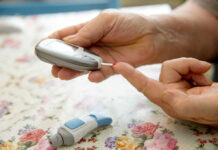
Coffee naps – the strategic combination of caffeine and brief slumber – might be the most effective energy-boosting hack you haven’t tried yet, outperforming both coffee and napping when used separately.
At a Glance
- Coffee naps involve drinking caffeine quickly before taking a 20-minute nap, timing the caffeine’s effects to kick in just as you wake up
- Caffeine works by blocking adenosine receptors in the brain, while napping naturally clears adenosine, creating a powerful synergistic effect
- Studies show coffee naps improve alertness, reaction time, and cognitive performance better than either coffee or naps alone
- Timing is crucial – the ideal window is between 1-3 pm, and the technique should be avoided within 6 hours of bedtime
How Coffee Naps Work: The Science Behind the Boost
Coffee naps work through a remarkable biological synergy between caffeine and sleep. When you consume caffeine, it takes approximately 20-30 minutes to be absorbed through your digestive system and reach your brain. During this window, taking a short nap allows your brain to naturally clear adenosine, a compound that builds up during waking hours and promotes drowsiness. As you wake up, the caffeine molecules arrive at your brain, where they block adenosine receptors, preventing any remaining adenosine from binding and causing sleepiness. This dual-action approach maximizes alertness in a way that either coffee or napping alone cannot achieve.
Researchers have found this combination particularly effective for combating the mid-afternoon energy slump that many adults experience. A landmark study from Loughborough University demonstrated that coffee naps reduced driving impairments and mistakes caused by sleepiness more effectively than either caffeine or napping independently. This finding has significant implications for shift workers, long-distance drivers, and anyone struggling with daytime fatigue.
Caffeine goodbye ?
– Rediscover natural energy levels
– Improve sleep & reduce anxiety
– Break free from dependencyTips:
– Gradual reduction
– Hydration & rest
– Healthy low/no carb diet & exerciseCaffeine Withdrawal:
Regular caffeine consumption can lead to dependency,… pic.twitter.com/b6jBl8q5HF— H.E.R.O. (@HealingFaster) April 23, 2024
Perfecting Your Coffee Nap Technique
To maximize the benefits of a coffee nap, timing and preparation are essential. Start by drinking your coffee quickly – ideally an 8-ounce cup containing about 200 milligrams of caffeine. Immediately find a comfortable place to nap, preferably in a dark, quiet environment. Set an alarm for 20 minutes, which is long enough to enter light sleep but short enough to avoid deeper sleep stages that could cause grogginess. The ideal time for a coffee nap is between 1 and 3 p.m., coinciding with the natural post-lunch dip in energy that most people experience due to circadian rhythm patterns.
It’s important to avoid coffee naps too late in the day, as caffeine has a half-life of about 5-6 hours in most adults. Taking a coffee nap after 3 p.m. might interfere with your nighttime sleep quality. Similarly, morning coffee naps are less effective, as your body naturally produces cortisol upon waking, which already promotes alertness. Experts recommend waiting 60-90 minutes after waking for your first caffeine intake of the day to work with your body’s natural hormone cycles.
Who Benefits Most from Coffee Naps
Coffee naps show particular promise for shift workers, who make up approximately 15 million Americans according to the U.S. Bureau of Labor Statistics. These individuals often struggle with disrupted circadian rhythms and sleep deprivation. For them, strategic coffee naps can help maintain alertness during critical work periods. Studies have specifically shown that coffee naps help reduce errors in cognitive tasks and improve memory performance during periods of sleep deprivation, making them valuable for healthcare workers, emergency responders, and others who must remain vigilant despite irregular sleep schedules.
Individual responses to coffee naps vary significantly based on genetics. The CYP1A2 gene influences how quickly your body metabolizes caffeine, with some people processing it rapidly and others more slowly. Those who metabolize caffeine quickly may find coffee naps especially effective, while slow metabolizers might experience jitteriness or disrupted sleep from the same amount of caffeine. Additionally, people with certain health conditions or those taking medications that interact with caffeine should consult healthcare providers before trying coffee naps.
Considerations and Alternatives
While coffee naps offer benefits for many, they aren’t suitable for everyone. People with caffeine sensitivity, anxiety disorders, or heart conditions should exercise caution. Consuming excessive caffeine can lead to nervousness, increased heart rate, and sleep disturbances. According to the American Journal of Clinical Nutrition, about 85 percent of U.S. adults consume at least one caffeinated beverage daily, suggesting many might benefit from optimizing their caffeine habits through techniques like coffee naps.
For those who cannot consume caffeine, alternatives exist. Regular short naps without caffeine still provide significant benefits for alertness and cognitive function. Other energy-boosting strategies include short breaks with light physical activity, exposure to bright light or natural daylight, staying well-hydrated, and maintaining a consistent sleep schedule. These approaches can complement or substitute for coffee naps depending on individual needs and sensitivities.


















